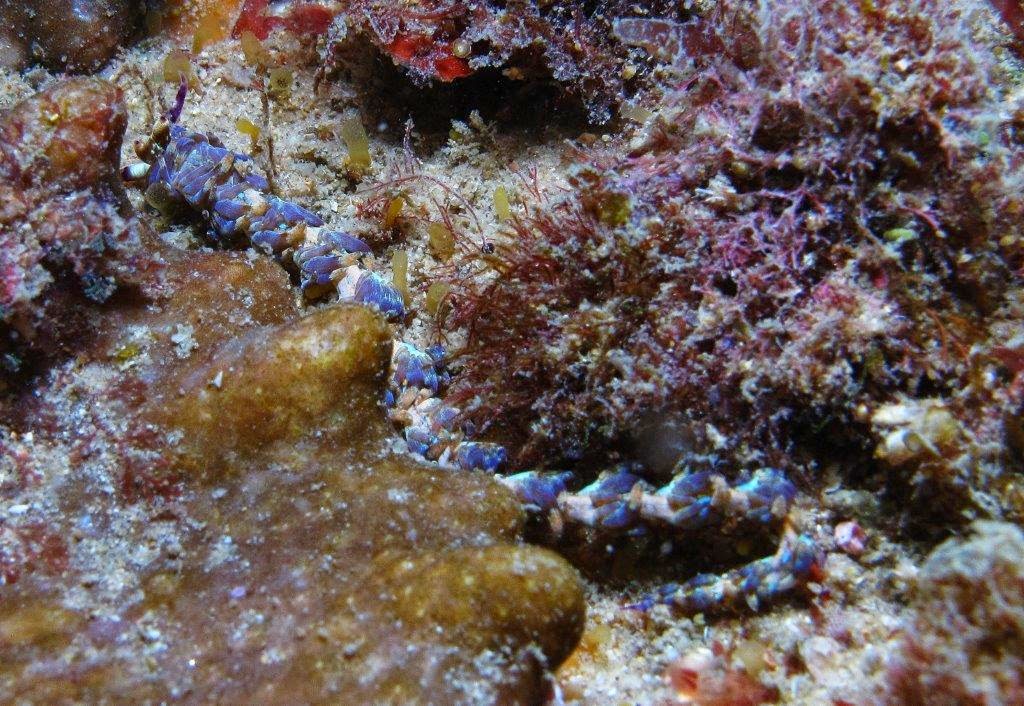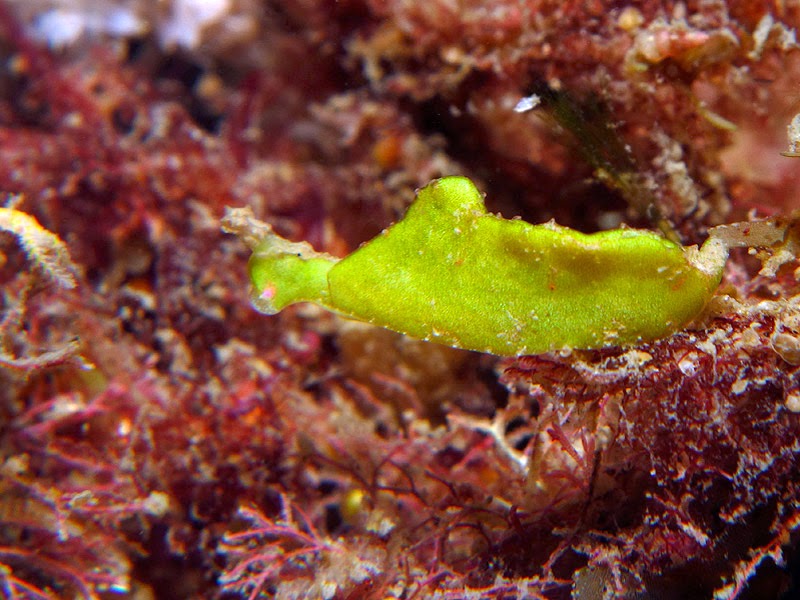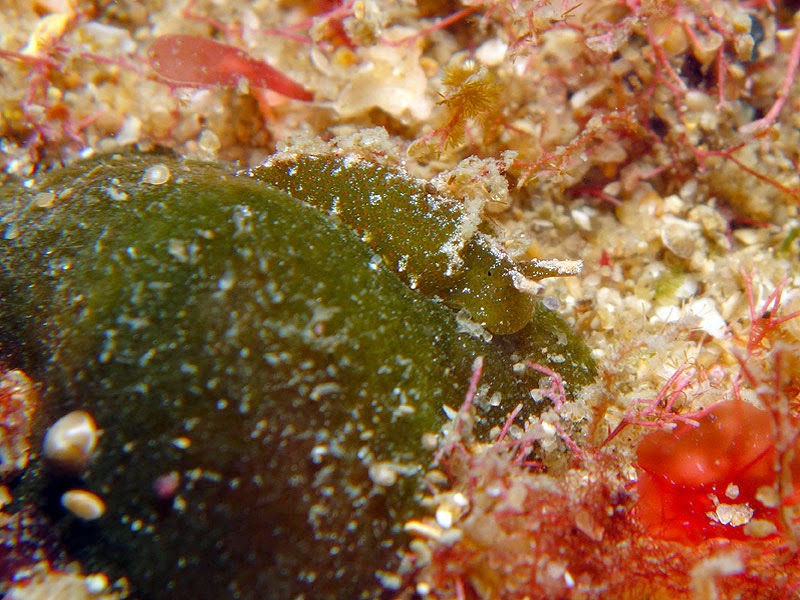Terry, Julie and David on this excursion consisting of 1 x 97 minute and 1 x 89 minute dives in water depths of 14m to 17m. 10m viz, 23C water temp and no surge (and no kelp either).
Having experienced the delights of the Van Dieman's Land waters David was keen to partake once more in the search for sea slugs at the local sites. Julie and Terry took pity upon him and whisked him out (the day after his return) to a site where the slugs are sighted upon the bottom even whilst descending the anchor line. The list below will attest to the variety and quantity observed.
Number of species sighted: 1st dive/2nd dive
* Species with highest specimen count
Acteocina sp. 1 (shell) 1/-
Ardeadoris aff. averni -/2
Bornella anguilla -/1
Chelidonura inornata -/1
Chromodoris kuiteri -/1
Chromodoris splendida 5/3
Chromodoris striatella 1/1
Dendrodoris denisoni -/1
Dermatobranchus cf. primus 3/3
Dermatobranchus ornatus 3/5
Dermatobranchus semilunus -/1
Dermatobranchus tuberculatus 1/1
Doriprismatica atromarginata 1/-
Elysia maoria -/1
Elysia pusilla 1/-
Glossodoris vespa -/2
Goniobranchus daphne -/1
Goniobranchus geometricus -/1
Goniobranchus tinctorius 3/1
Hexabranchus sanguineus 1/-
Hypselodoris apolegma -/2
Hypselodoris jacksoni 2/-
Hypselodoris obscura 2/2
Jorunna parva 1/1
Noumea alboannulata -/1
Noumea simplex 2/-
* Phyllidia ocellata 7/2
Phyllidiella lizae 1/-
Phyllidiella pustulosa 2/2
Phyllodesmium crypticum -/1
Pteraeolidia ianthina 4/2
Roboastra luteolineata -/1
Sagaminopteron ornatum 1/4
Tritoniopsis alba 1/4
Phyllodesmium crypticum
Dermatobranchus semilunus
Noumea simplex - a pair
Hexabranchus sanguineus
Dermatobranchus tuberculatus
Pteraeolidia ianthina
Noumea alboannulata
Ardeadoris aff. averni
Bornella anguilla
A very happy chappy and not just
with the great surface conditions
Goniobranchus tinctorius
Goniobranchus tinctorius
Dermatobranchus ornatus - juvenile
Phyllidia ocellata
Elysia pusilla - off the Halimeda
Dermatobranchus cf. primus
An autotomized ceras but no owner in sight
Hypselodoris apolegma - the colours are correct
and the reticulation in the white marginal band
is just discernible when enlarged
Roboastra luteolineata
Tritoniopsis alba
Chromodoris striatella
Elysia maoria
Goniobranchus daphne
Chromodoris kuiteri
Chelidonura inornata - one of the largest
specimens we have sighted

























